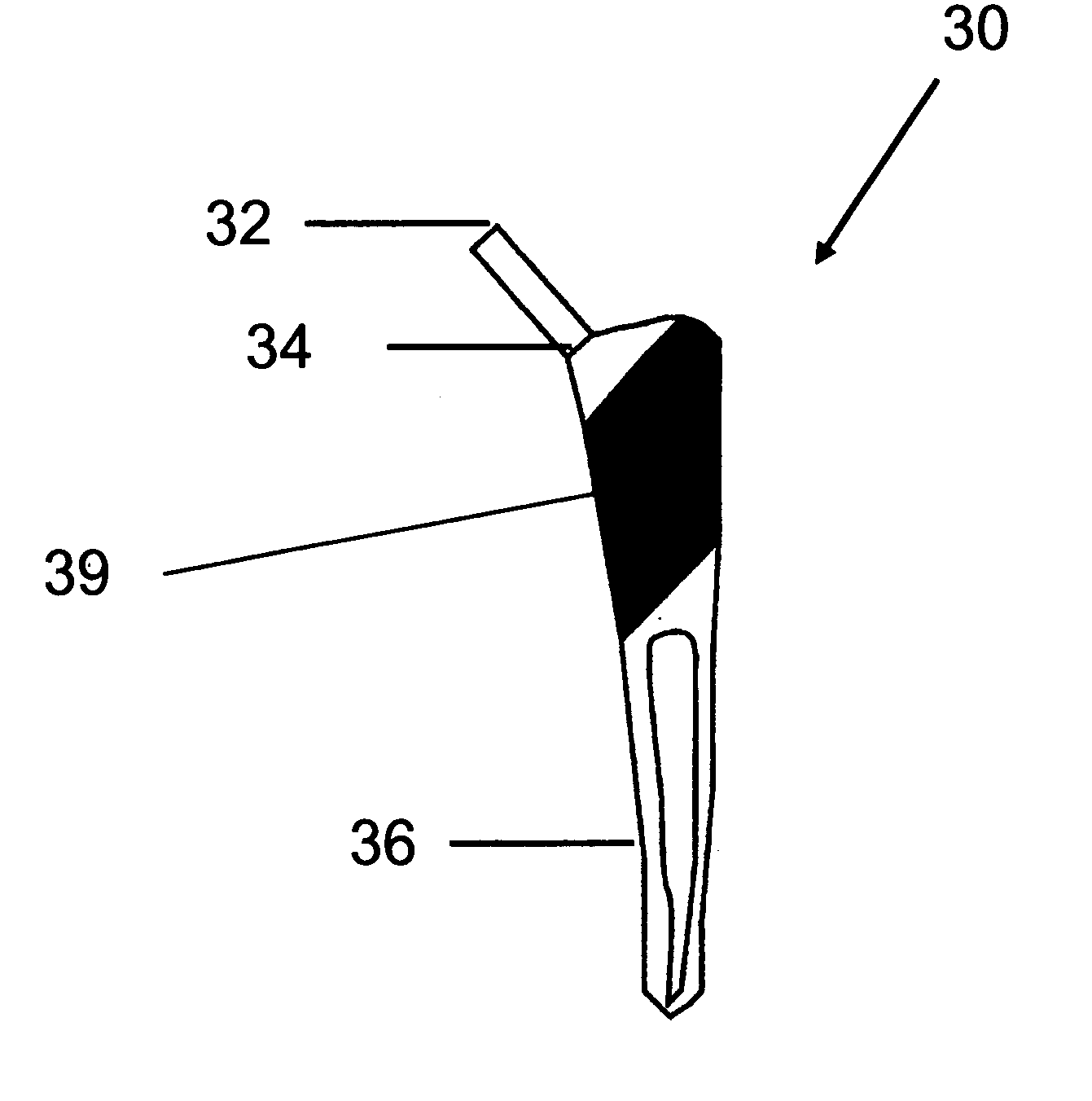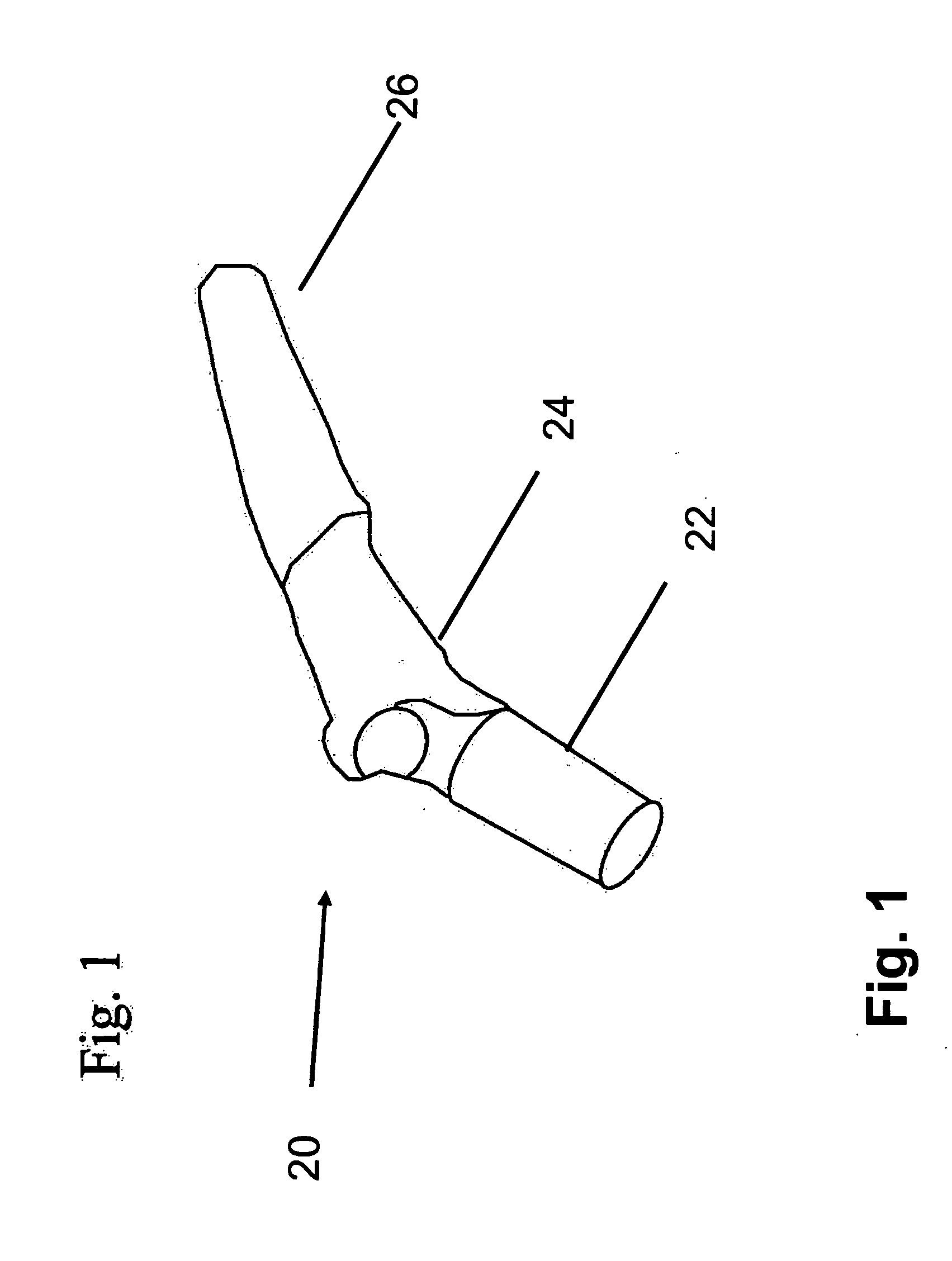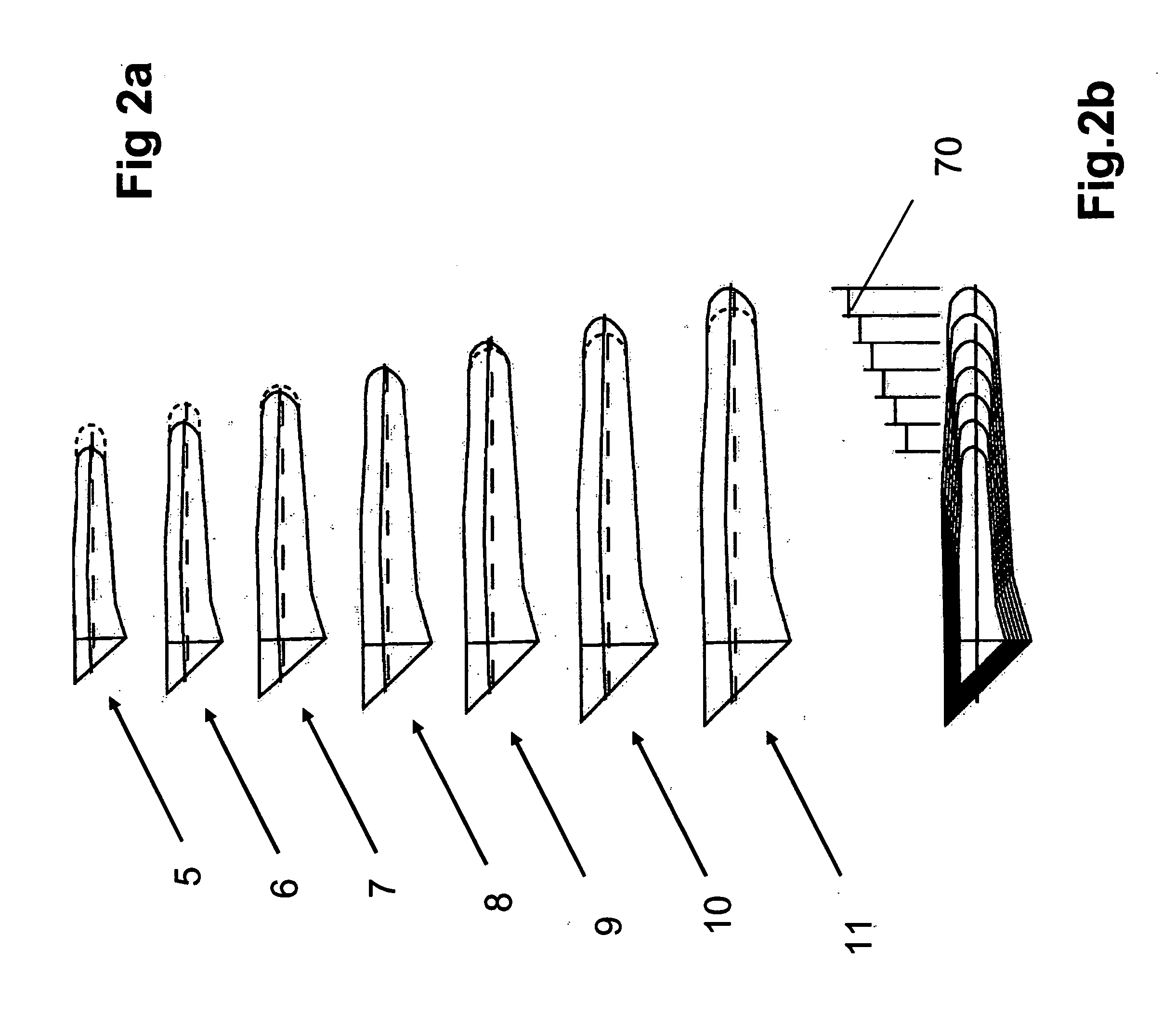Canine femoral stem system
a femoral stem and canine technology, applied in the field of canine femoral stems, can solve the problems of severe restrictions in dimensions, unsuitable use, and lack of increased contact area, and achieve the effect of reliable hip replacement and enlarged bone canals
- Summary
- Abstract
- Description
- Claims
- Application Information
AI Technical Summary
Benefits of technology
Problems solved by technology
Method used
Image
Examples
Embodiment Construction
[0058] The present invention provides a femoral stem for canine hip replacements. The femoral stem comes in a range of sizes of 20 mm, 22 mm, 24 mm, 26 mm, 28 mm, 30 mm and 32 mm with a common femoral head of 17 mm. The surgeon may choose the size of femoral stem based on the bone size of the dog. If for any reason, the canal reamed is not according to the size requirements of the femoral stem, such as presence of bone defects, the next size may be chosen by selecting the next reamer and broach size, creating a hip implant that matches the femoral head and femoral prosthesis. The surgeon may choose the cementless biologic fixation system (BFX) or cemented fixation system (CFX) depending on the clinical situations during surgery. Thus the canine femoral stem system provides a variety of sizes of femoral stems that matches precisely with a 17 mm femoral head providing reliable hip replacement procedures.
[0059] In osteoarthritis and other related diseases of the hip, the effects on da...
PUM
| Property | Measurement | Unit |
|---|---|---|
| size | aaaaa | aaaaa |
| size | aaaaa | aaaaa |
| size | aaaaa | aaaaa |
Abstract
Description
Claims
Application Information
 Login to View More
Login to View More - R&D
- Intellectual Property
- Life Sciences
- Materials
- Tech Scout
- Unparalleled Data Quality
- Higher Quality Content
- 60% Fewer Hallucinations
Browse by: Latest US Patents, China's latest patents, Technical Efficacy Thesaurus, Application Domain, Technology Topic, Popular Technical Reports.
© 2025 PatSnap. All rights reserved.Legal|Privacy policy|Modern Slavery Act Transparency Statement|Sitemap|About US| Contact US: help@patsnap.com



